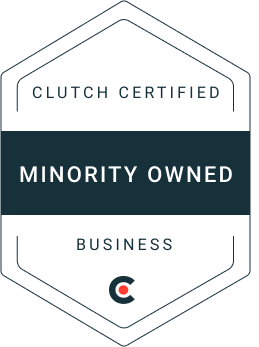Amazon Optimization Checklist to Create Retail-Ready Product Pages and Storefronts

Amazon is a competitive marketplace with millions of sellers. For you to stand out, you need a great product to add value to the customer. To get the customer to buy it, you need retail-ready product pages. Here’s a great Amazon optimization checklist to make your products pop.
Optimize Your Product Title
- Front-load with your main keyword
- Include top 2-3 secondary keywords
- Keep it under category character limit
- We strategically front-load titles with the highest-traffic, most relevant keyword, ensuring top 2-3 secondary keywords follow naturally. All titles are crafted to stay within Amazon’s category character limits, ensuring maximum visibility while adhering to platform rules.
- Learn more here on our other posts about increasing profitability.
- Put your brand name and your top-producing keyword in your title
- Here’s our full title SOP:
- Most categories allow for 200 characters and under
- Brand Name goes first
- Product Name goes second
- Include at least 2 keywords in “phrase” form
- Include Value-add propositions
- End with (Size/Color)
- Avoid Trademarked Competitor Names
- Avoid Banned Phrases
- Avoid Keyword Stuffing (Duplicate keywords in titles)
- Avoid certain characters: ~ ! * $ ? _ ~ { } # < > | * ; ^ ¬ ¦”
- Example Title: SQUIREME. Y1 Glass Water Bottle – Ultra-Premium Dishwasher Safe Water Bottle Glass – 1/3-Turn Easy-Off Cap, BPA Free, for Both Hot and Cold Drinks – Updated 2020 Model (Blue, 20 fl. oz.)
- RUN AN A/B TEST AGAINST: SQUIREME. Y1 Glass Water Bottle – Blue, 20 fl. oz. Ultra-Premium Dishwasher Safe Water Bottle Glass – 1/3-Turn Easy-Off Cap, BPA Free, for Both Hot and Cold Drinks – Updated 2020 Model
- Try Variation description high up in title to help with mobile customers
Craft bullet-proof bullet points
- Lead with benefits, follow with features
- Incorporate longtail keywords naturally
- Use all 5 bullets (1000 character limit)
- Our bullet points lead with the key benefits of the product, followed by important features. We seamlessly integrate long-tail keywords to enhance discoverability, ensuring all five bullets are fully utilized (up to 1000 characters). This approach not only optimizes for search but also highlights why the product stands out.
- Here is our full bullet point SOP:
- Most categories allow for 500 characters and under in each of the 5 bullet points
- If the category allows, start with the the first few words of each bullet points focusing the the biggest value-add
- Include at least 2 keywords in “phrase” form per bullet point
- Include Value-add propositions
- Don’t capitalize all letters of any words (don’t do THIS for EXAMPLE)
- Avoid Trademarked Competitor Names
- Avoid Banned Phrases
- Avoid Special Characters and Decoration Text
- “Example Bullet Point: Easy-Off Cap: Industry-leading and patented 1/3 turn cap, means you twist the cap 120 degrees and the water bottle lid is off. No more fumbling with caps to unscrew, just simply twist 120 degrees and it’s off. The different colors in the Y1 collection provide options as premium glass water bottles so you stay cool, stylish, and hydrated.”
Supercharge your backend search terms
- Add synonyms and common misspellings
- Use all 250 bytes
- Avoid repeating words from your title/bullets
- In the backend, we maximize all 250 bytes by including relevant synonyms, common misspellings, and additional search terms. We avoid repeating any keywords already used in titles or bullet points, ensuring broader coverage and improved search performance.
- Any keywords that you want to rank for should be in your copy. If you want to be shown for “glass water bottle”, you need the phrase “glass water bottle” in your Title, bullets, description, or backend search terms. This doesn’t work for some banned keywords and phrases, there you have to use creative amazon ads and off-amazon ads to drive traffic (like weight loss).
- Here is our full SOP for the hidden description:
- Most categories allow for 2000 characters and under
- Include at least 10 keywords in “phrase” form
- Include Value-add propositions
- Avoid Trademarked Competitor Names
- Avoid Banned Phrases
- Avoid HTML
- Here is our full SOP for backend search terms:
- This is never seen by customers or competitors
- Most categories allow for 250 bytes and under – Some categories allow 2000 characters.
- Include words and mispellings NOT in the copy already
- Do not use punctuation
- Example: para hombre big tall 90s camisas white gold boys mens women loose dress slim gear colored small tee cotton hombres pocket active drifit hoodie sleeveless dryfit fitted collarless vintage plain workout patterned overshirt
Leverage A+ Content
- Sprinkle in relevant keywords in alt-text
- Use high-quality images with text overlays
- Tell a compelling brand story
- We elevate your product pages with A+ Content, incorporating high-quality images with engaging text overlays. Alt-text is optimized with relevant keywords to boost searchability. Every element of the A+ content aligns with the brand’s story and ensures it connects emotionally with shoppers. Our research includes analyzing competitors’ visuals and syncing the design with the brand’s website and social media presence. Visuals are created through a combination of UGC content or professional shoots, ensuring they resonate with the audience. While staying within Amazon’s ToS, we create a compelling narrative that demonstrates why your product is superior to the competition.
- Here is our full SOP for adding text to A+ Content
- A+ Content – Text Section
- This is rarely seen if you have A+ Content Description
- Most categories allow for 500 characters and under
- Include at least 10 keywords in “phrase” form
- Include Value-add propositions
- Avoid Trademarked Competitor Names
- Avoid Banned Phrases
- Avoid HTML
- Here is our full SOP for adding alt-text behind A+ Content
- This is never seen by customers, but competitors can see this
- Most categories allow for 100 characters and under
- Include words and mispellings NOT in the copy already
- Do not use punctuation
- Example: para hombre big tall 90s camisas white gold boys mens women loose dress slim gear colored small tee
If you’re struggling to build this yourself, let’s talk. We do a fantastic job of building high-converting product pages that accurate represent the brand.
Once this is ready to start selling, Run PPC campaigns strategically
- Target your main keywords
- Maintain a healthy budget
- Understand that keywords take time to rank for
- Learn more about how PPC affects organic rankings here on our other post.
You'll also want to build a Brand Storefront and it Needs to Explain and Sell
- With brand registry, you’re able to build a storefront on amazon.com/YOURBRAND to tell a story and sell without any ads from competitors.
- This should feel like a DTC website
- CTA and detailed information for each product. Sub-pages by product type.
- Customers should not need to leave the storefront in order to understand the product types.
Don't forget about A/B Testing
- We follow a rigorous A/B testing schedule, starting with HERO images and titles, then moving to secondary images and A+ content. Every 10 weeks, we test and refine these elements to consistently improve click-through rates (CTR) and conversion rates (CVR).
Amazon does not end when a product page is done, you need to be constantly trying new things and testing out to get an edge up on your competition.


